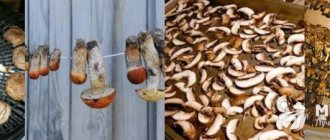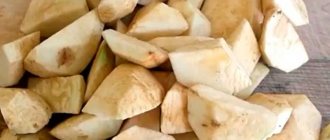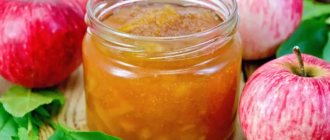Pears are capricious in storage - as soon as the temperature is not maintained correctly or the fruits are not placed correctly, the taste and aroma are lost, and then the pears disappear altogether. However, with the necessary knowledge, these problems can be avoided.
Let's talk about how to store pears in a private house and in a city apartment, what conditions to create and whether they can be frozen. We will also tell you what to do with dried fruits.
How to pick pears to last longer
To successfully store pears, they must be collected correctly and on time. The main reason for the failures of gardeners lies precisely in this - not every fruit has excellent shelf life and is able to last at least until mid-winter. Proper harvesting involves the following points:
- Pears are removed from the tree when unripe, which extends their shelf life.
- The harvest is harvested in sunny, dry weather. It is better at noon or in the afternoon to avoid dew. Excess moisture harms the fruit.
- It is desirable that the stalk remains. To do this, turn the fruit counterclockwise and carefully pull it down.
- Harvesting begins from the lower branches, where the fruits are held weaker.
- In a bucket or other container in which the fruits are placed, you need to lay any fabric; it will protect the skin from damage.
It is very difficult to choose the time for harvesting. If this is done too early, the pears will quickly lose their taste, and if it is done too late, they will not last long. The degree of readiness can be determined by the color of the seeds: if they have turned brown, then it’s time to start harvesting. If the flesh near the seeds begins to darken, then you are already late with harvesting, the pears will only be used for processing.
It is advisable not to delay the determination of fruits for storage. Ideally, no more than three days should pass between removing pears from the tree and storing them in storage.
Varieties suitable for long-term storage
Pears ripened in summer will last until the last days of October, and winter varieties can be stored until February or March. These pears do not spoil for a long time. That is why close attention is paid to conservation. The better the conditions, the longer you will be able to enjoy fresh fruit.
Autumn
Autumn pears ripen in early or first half of autumn. These include the following varieties:
- Marble. The fruits are small in size with a strong, elastic skin. This provides the fruits with resistance to rotting. They are characterized by delicate pulp with a pleasant taste. Able to tolerate low temperatures.
- Yakovlev's favorite. The fruits have juicy, fleshy, sweet and sour pulp. They are collected unripe for storage. The presence of the required amount of fruit acids contributes to the long-term preservation of fruits.
- Victoria. Produces large, sweet, juicy fruits. Scab resistant. Every year it pleases with abundant fruiting.
- Santa Maria. An Italian variety with excellent winter hardiness and productivity. The tree is medium-sized.
Autumn-winter
They ripen in late autumn. These include:
- Bere Box. The variety is resistant to humidity, low temperatures, and common diseases, which facilitates long-term storage. Harvesting during primary frosts is allowed. Some disadvantages are the large size of the fruit and its fleshiness. This reduces safety indicators.
- Elegant Efimova. Stored if removed almost half-green. Otherwise, the pulp becomes soft and will quickly rot. Has a slightly tart flavor. The presence of tanning components provides resistance to rot and mold.
Winter
These include hybrids with frost-resistant characteristics. Varieties ripen slowly and remain dense:
- Pervomayskaya. Pears have a waxy coating on their skin that protects them from low temperatures, harmful insects, and fungal infections. Helps store them for up to seven months.
- Charles Cognier. The fruits can withstand temperatures as low as -3 °C. They are characterized by a sweetish taste with a slight chocolate tint.
- Saratovka. Productivity up to 100 kg per tree. Late variety, harvested in the last days of September, shelf life from 3 to 5 months. Pears up to 200 g, yellow-green color when picked. When fully ripe, they acquire a golden hue. The pears are juicy, not tart. The variety is characterized by resistance to scab and powdery mildew.
See also
Description and characteristics of the Fairytale pear variety, planting and care rulesRead
Storage requirements
If a separate room is used (basement, cellar, insulated shed), all surfaces are disinfected. To do this, first sweep away debris and cobwebs, then spray the surfaces with a lime solution, Bordeaux mixture or copper sulfate. You can use formaldehyde bombs, set them on fire, place them on fireproof objects, then close all the doors tightly. After treatment, the room must be ventilated.
The storage must have the following conditions:
- temperature in the range 0… +2 °C (optimal for most varieties);
- humidity 90–95%;
- lack of sunlight.
You cannot store pears in plastic and iron containers; wooden boxes are ideal in this regard. They must be treated with sulfur vapor; this will protect the pears from mold.
Medium-sized fruits are best stored. They need to be cooled before storing. To do this, you can simply leave the boxes outside overnight, preferably under a canopy.
Correct selection
You should choose fruits for preparations carefully.
In winter, it is best to store slightly unripe fruits. They will reach the required condition during storage and will remain unspoiled longer. They remove fruits from trees carefully, without putting pressure on them. The pear is grasped with your fingers, light pressure is applied to the stalk, the fruit is lifted and separated from the branch. Trees cannot be shaken. The following varieties are distinguished:
- The early ripening variety is harvested from early to mid-July. Smallish sweet fruits cannot be stored fresh for a long time. It is better to process them into jam, compote or jam.
- Mid-season species are collected in August, from the middle to the end of the month. The pear is distinguished by its large shape and hard flesh. The fruit tastes juicy and sweet. Regardless of the method, they will be able to survive until the beginning of winter, no longer.
The most suitable for long-term storage is the late or winter type of pear.
Fruits must not be damaged or spoiled. Experts in growing fruit crops know how to store pears at home. The fruits should be firm, dry, without dents or bruises. The crop is harvested when the weather is dry. If harvesting is delayed, pears may fall into frost. If they survive the fifteen-degree cold, they cannot be left fresh for long.
Special containers are selected for storage in winter. Preference is given to a wooden box, which it is advisable to clean and fumigate before use. Conditions for baskets and boxes made of plastic are not so good.
Please note that an airtight container will allow the fruit to rot in a short time. The container should have holes to allow for slight air movement. A paper layer is applied near the bottom and walls of the box. The container chosen is volumetric. The pears do not touch each other and are laid out with the stalks facing up.
Pay attention to the height of the boxes. It is permissible to lay out only a couple of layers of pears separated by paper
You can use sawdust or straw to arrange the fruit. Not everyone knows how to store pears if they are of different varieties. The main rule is to put them in different containers. Professional gardeners store sweet fruits in special refrigerators with shelving. Place paper under a uniform layer of pears, with the stalks facing up.
Top articles: Broccoli dishes
Methods for storing pears in an apartment
Pears, unlike apples, do not have a waxy coating, and therefore are stored very poorly, especially in an apartment. The temperature here is much higher than recommended, and therefore, in a week at best, the fruits will become unsuitable for food. There are few storage options in the apartment:
- Place the pears in the refrigerator. You can store some types of pears for 3-4 weeks.
- Place in a box and put it on the balcony or loggia. Protection from precipitation and systematic monitoring of the condition of the pears are mandatory. Shelf life is approximately 2-3 weeks, depending on weather conditions.
- Dry. Dried fruits can be stored for about a year; they can be used for confectionery purposes and for making compotes.
You can try freezing the pears. If you simply cut them up and put them in the freezer, the taste will be ruined, and they will only be used for compotes. But there are several freezing methods that few people know.
You can take a board that will easily fit into the freezer, cover it with paper or cling film, cut the pear into slices and arrange them so that they do not touch. To protect against darkening, the surface is sprinkled with lemon juice. The board is put in the freezer, and a day later it is poured into a bag.
Second freezing option:
- Cut the pears into slices and soak in boiling water for 3 minutes.
- Remove from water and transfer to serving containers.
- Prepare syrup - dissolve 400 g of sugar in 200 ml of water.
- Pour syrup into containers until fruit is completely covered.
- Place in the freezer with the fast freeze mode set in advance.
Pears prepared in this way can be stored until spring and used as needed.
It is better not to store pears in bags outside the refrigerator: there is a high risk of condensation forming, due to which the fruits will quickly disappear. Thermal boxes are also bad helpers when storing pears.
8 general principles on how to properly store fruit at home
Principle 1: Do not store fruits and vegetables together. Fruits that emit large amounts of ethylene (a ripening agent) can speed up the ripening of nearby vegetables and spoil them.
Top articles: Household vacuum cleaner: why is it needed and how to choose it
Principle 2: Remove moldy fruit immediately. Before storing fruit in the refrigerator, cabinet or tabletop vase, be sure to remove any spoiled fruit to prevent the spread of mold. Try to eat overripe fruits first.
Principle 3. Store unripe fruits at room temperature, preferably in a paper bag. This is especially true for apricots, peaches, pears, plums, persimmons, avocados, kiwis and mangos. The bag will become a trap for ethylene, a gas that is released by the fruit and acts as a ripening agent. Want to speed up the process even more? Place an apple in the bag. Ripe and, especially, overripe fruits are best stored in the refrigerator.
Principle 4. Store fruit on the bottom shelf of the refrigerator or in a special compartment for fruit. The exception is fruits that need to be stored at room temperature (whole melons, bananas, citruses, unripe fruits), as well as apples - they are best stored on the top shelf of the refrigerator, separately from other fruits.
What fruits cannot be stored in the refrigerator? The answer is easy to remember: bananas and citrus fruits
Principle 5: Do not store fruit in a crowded refrigerator container. Air should circulate freely around the fruit.
Principle 6: Eat cut fruit as quickly as possible and do not store it in the refrigerator for more than two days. This is especially true for watermelons, melons and pumpkins, as well as persimmons. Cut fruits cannot be stored at room temperature - firstly, they will quickly deteriorate and wrinkle, and secondly, they will attract gnats and flies.
Principle 7. Store unwashed fruit in the refrigerator in its original packaging or loose bag. Fruits stored at room temperature should be removed from the packaging immediately.
Principle 8. Always have a vase of fruit on the table or countertop. It is better to choose a place that is always visible and easily accessible. This way, you and your household will not forget about these delicious vitamins, and the interior will only be decorated.
Below are several photo ideas on how you can beautifully, conveniently and correctly organize fruit storage at home at room temperature.
A bowl of fruit makes a great centerpiece for a dining table. In a beautiful vase, bright fruits will seem even more appetizing
Homemade fruit holder from boards and metal baskets
The system of kitchen rails and baskets is ideal for storing apples and pears
It is convenient to store a juicer and a stationary blender next to the fruit.
You can compactly store a large amount of fruit in this bookcase
Storage options in the basement or cellar
It is easier to store pears in a cellar than in an apartment, but long-term storage is out of the question. At best, you can hope to get fresh fruit in mid-January. Only sorted medium-sized pears are placed in the cellars, free of rot, damage to the skin, dents and other defects, and always with the stem.
It is important to create the desired humidity. The easiest way to do this is to place a container of sand in the middle of the room, which is periodically moistened. Excessively dry air is even more harmful to pears than high humidity - this is how they quickly dry out, become wrinkled and tasteless.
Pears are laid out on racks in one row so that the fruits do not touch each other. You can cover the top with spruce branches, but be careful not to damage the skin.
Storage in boxes
If there are no shelves or they are occupied, you can put the pears in wooden boxes, in no more than two layers. In this case, approximately 5 cm should remain to the top to prevent accidental damage to the pears. It is important that the fruits do not come into contact with each other, and sand is best suited for this purpose.
Proceed as follows:
- They take wooden boxes and fumigate them with sulfur.
- The sand is calcined over an open fire or on an electric stove. You can take a mountain or river one.
- As soon as the sand has cooled, pour it onto the bottom of the box. To prevent him from waking up through the cracks, you can first lay down unnecessary newspapers.
- Pears are placed on the sand with the stems up so that the distance between the fruits is 2-3 cm.
- Add sand to hide the stalks and lay the row of pears again.
The second row is also covered with sand and removed to the darkest place in the basement. Usually, large volumes of pears are not stored this way - it is difficult to control the quality of the fruit, so a lot is wasted. But it’s quite possible to save 1-2 boxes of 10 kg each.
Instead of sand, you can use wood ash, moss or fern leaf. There is information about the successful use of onion peels for filling. The main thing is that the material is either hygroscopic or bactericidal.
Methods of storage in the ground
If there is no cellar or basement, pears can be stored in the ground. We have found two ways in which these fruits are perfectly stored almost all winter. True, you will have to work hard - organizing storage is difficult.
Pears in the hole
The method can be used in areas with deep groundwater or if the area is located on a hill. To preserve the crop, they dig a hole, the length and width of which are arbitrary, and the depth is 120-150 cm. As soon as the hole is dug, they begin laying the fruit according to the following scheme:
- The pears are placed in boxes, which are lowered into a hole and placed one on top of the other so that there is half a meter left to the top.
- A pipe with a diameter of 100 mm or more is placed in the center. Its lower end should be raised 50 cm from the ground.
- The top is covered with slate, boards and other available materials, and then covered with earth in a layer of at least 40 cm.
We need to finish the work before the first frost. Then you can open the hole, take out the box and immediately restore the soil layer. Pears can be stored this way for several months, but can be damaged by rodents.
Storage in the ground
This method is less labor intensive. They dig a hole up to half a meter deep, the width and length are arbitrary. The pears are carefully sorted; whole, defect-free fruits are packed in plastic bags, which are lowered into a pit. The bags are placed in one row, with a layer of spruce branches on top to scare off animals that love pears. The final stage is to pour the soil in a layer of 25-30 cm. This way you can store pears until the New Year holidays.
It is difficult to find a hole in the fallen snow, so a long stake is stuck into its bottom, which will serve as a guide in the future.
Drying pears and subsequent storage
The methods listed above are risky; at best, we can talk about storage for 2-3 months. To preserve for a longer period or in larger quantities, it is better to dry the fruits. This can be done in the sun, in the oven or in an electric dryer (dehydrator). Each option has its own nuances:
- When drying in the sun, it is better to soak each slice in 1% wine vinegar so that the slices are not dark. Dry until ready in a place accessible to sunlight, you can cover with gauze to prevent flies from landing.
- When drying in the oven, first keep the slices at a temperature of 55-60 ° C for two hours, then at a temperature of 80 ° C until the pears reduce in size. After which the temperature is reduced to the original temperature and dried until ready.
- If the pears are placed in the dryer, then the temperature is set to 70 ° C and kept for 15-20 hours, depending on the model of the device and the thickness of the slices.
Store drying in fabric bags, glass jars or plastic bags for no more than a year. It is important that there is no high humidity in the room, and that there are no products with a strong odor nearby, which dried pears absorb perfectly.
From time to time you need to go through the drying process and throw away spoiled specimens.











